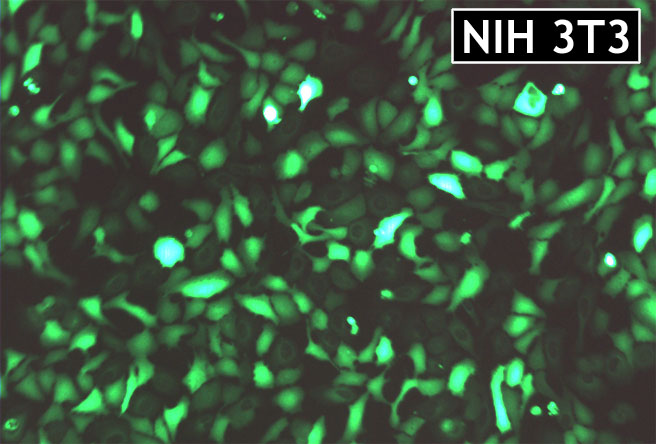EGFIE LLC
We always add value to our customers
Search by Keyword
Product Categories
Description
GenJet™ DNA In Vitro Tranfection Reagent for NIH3T3 Cells is pre-optimized for NIH3T3 cell transfection. NIH 3T3 cells come from a cell line established in 1962 by two scientists then at the Department of Pathology in the New York University School of Medicine, George Todaro and Howard Green. The 3T3 cell line has become the standard fibroblast cell line. Todaro and Green originally obtained their 3T3 cells from Swiss mouse embryo tissue.
Refer to the following optimal transfection conditions for maximal transfection efficiency on NIH 3T3 cells. GenJet™ reagent, 1.0 ml, is sufficient for 300 to 600 transfections in 24 well plates or 50 to 100 transfections in 6 well plates.
|
Summary of Optimal Transfection Conditions: |
|
Storage Condition
Store at 4 °C. If stored properly, the product is stable for 12 months or longer

A Picture Showing Transfection Efficiency of GenJet™ Reagent on NIH 3T3 Cells. NIH 3T3 cells were grown per ATCC recommended culture medium and transfected with pEGFP-N3 by GenJet™. The efficiency was checked 24 hours post transfection
Data Sheet ![]()
Shopping Basket
| Items: | 0 |
| Subtotal: | $0.00 |
Note: All prices in US Dollars
customer@egfie.com